Today Current Affairs:10th June 2022 for UPSC IAS exams, State PSC exams, SSC CGL, State SSC, RRB, Railways, Banking Exam & IBPS, etc
Table of Contents
What Is a Bad Bank?

The Ministry of Finance has announced that the National Asset Reconstruction Company (NARCL) along with the India Debt Resolution Company (IDRCL) will take over the first set of bad loans from banks and try to resolve them.
- The health of the balance sheets of Indian banks has improved significantly over the last few years with their Gross Non-Performing Assets (GNPA) ratio declining from a peak of 11.2% in FY18 to 6.9% in Q2FY22.
- NARCL has been set up by banks to aggregate and consolidate stressed assets for their subsequent resolution. PSBs will maintain 51% ownership in NARCL.
- IDRCL is a service company/operational entity which will manage the asset and engage market professionals and turnaround experts.
- Public Sector Banks (PSBs) and Public FIs will hold a maximum of 49% stake and the rest will be with private sector lenders.
- The government had already announced sovereign guarantees of Rs 30,600 crore for Security Receipts (SRs) to be issued by NARCL, which will be buying Rs 2 lakh crore non-performing loans from banks.
- A bad bank is a financial entity set up to buy Non-Performing Assets (NPAs), or Bad Loans, from banks.
- The aim of setting up a bad bank is to help ease the burden on banks by taking bad loans off their balance sheets and get them to lend again to customers without constraints.
- After the purchase of a bad loan from a bank, the bad bank may later try to restructure and sell the NPA to investors who might be interested in purchasing it.
- A bad bank makes a profit in its operations if it manages to sell the loan at a price higher than what it paid to acquire the loan from a commercial bank.
- However, generating profits is usually not the primary purpose of a bad bank — the objective is to ease the burden on banks, of holding a large pile of stressed assets, and to get them to lend more actively.
Minimum Support Prices (MSP) For The Kharif Season 2022-23:
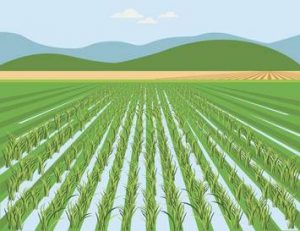
The Centre has approved the Minimum Support Prices (MSP) for the Kharif season 2022-23, stating that the rates are at least 1.5 times of the weighed average cost of production.
- The rates for 14 Kharif crops have been increased, the hikes ranging from 4% to 8%.
- The MSP is the rate at which the government purchases crops from farmers, and is based on a calculation of at least one-and-a-half times the cost of production incurred by the farmers.
- MSP is a “minimum price” for any crop that the government considers as remunerative for farmers and hence deserving of “support”.
- The Commission for Agricultural Costs & Prices (CACP) recommends MSPs for 22 mandated crops and fair and remunerative price (FRP) for sugarcane.
- CACP is an attached office of the Ministry of Agriculture and Farmers Welfare.
- The mandated crops include 14 crops of the kharif season, 6 rabi crops and 2 other commercial crops.
- In addition, the MSPs of toria and de-husked coconut are fixed on the basis of the MSPs of rapeseed/mustard and copra, respectively.
Factors for Recommending the MSP:
- The CACP considers various factors while recommending the MSP for a commodity, including cost of cultivation.
- It takes into account the supply and demand situation for the commodity, market price trends (domestic and global) and parity vis-à-vis other crops, and implications for consumers (inflation), environment (soil and water use) and terms of trade between agriculture and non-agriculture sectors.
World Ocean Day:

World Ocean Day was observed on June 8, 2022 with the theme for this year is “Revitalization: Collective Action for the Ocean”.
- The Day is celebrated every year on June 8.
- The Day was proposed in 1992 and was officially recognised by the United Nations in 2008.
- The purpose of the Day is to raise public awareness on Oceans and its resources and also to inform the public of the impact of human actions on the ocean.
- The ocean covers over 70 percent of the planet.
- According to the UN, oceans produce about 50 percent of the planet’s oxygen and are home to earth’s biodiversity.
- It is the main source of protein for more than a billion people around the world.
- The ocean is key to economy with an estimated 40 million people being employed by ocean-based industries by 2030.
World Brain Tumour Day:

World Brain Tumour Day is being observed on June 08, 2022
- It is observed to raise awareness and educate people about brain tumours.
- The day also pays tribute to those affected by brain tumours.
- The German Brain Tumor Association started this international commemoration day in the year 2000 as a tribute to all brain tumour patients and their families.
- A brain tumour occurs when cells grow at an abnormal rate to form a mass of abnormal cells within the brain.
- There are two main types of tumours-cancerous tumours and non-cancerous tumours.
- Some common symptoms of brain tumor are headaches, seizures, problem with vision, vomiting, and mental changes. Patient may feel headache and vomiting in the morning.
- More specific problems may include difficulty in walking, speaking and sensation.
- Brain tumour can be a life-threatening disease but completely treatable.
- Some of the common treatments of brain tumour include surgery, chemotherapy, radiotherapy, anti-seizure medication, steroid treatment, etc.
- On a global scale, 330,000 children and adults worldwide are diagnosed with cancer of the central nervous system in one year.
Carbon Bombs:

A group of environmentalists, lawyers, and activists have come together to identify and ‘defuse carbon bombs’– coal, oil and gas projects that have the potential to contribute significantly to global warming.
- The usage of the term ‘carbon bombs’ picked up after an investigative project of The Guardian from May 2022.
- Defining the term in its report, The Guardian said that it is “an oil or gas project that will result in at least a billion tonnes of CO2 emissions over its lifetime.”
- Whenever coal, oil, or gas is extracted it results in pollution and environmental degradation. Further, carbon emissions take place in particularly large amounts when fuel is burned.
- In total, around 195 such projects have been identified world over, including in the US, Russia, West Asia, Australia and India.
- According to the report, they will collectively overshoot the limit of emissions that had been agreed to in the Paris Agreement of 2015.
- Apart from coal, oil, and gas operations, the report highlighted the threat of methane, which “routinely leaks from gas operations and is a powerful greenhouse gas, trapping 86 times more heat than CO2 over 20 years”.
Leave It In the Ground Initiative (LINGO):
- The network working towards this goal of ‘defusing’ carbon bombs is called Leave It In the Ground Initiative (LINGO).
- Its mission is to “leave fossil fuels in the ground and learn to live without them.”
- It believes the root of climate change is the burning of fossil fuels, and the 100% use of renewable energy sources is the solution.
- On its website, it has listed carbon bomb projects from all over the world.
- This includes the Carmichael Coal Project owned by the Adani Group, Gevra Coal Mines in Chhattisgarh owned by Coal India, and Rajmahal Coal Mines in eastern Jharkhand owned by Eastern Coalfields.
- LINGO aims to organise ground support for protesting such projects, challenge them through litigation, and conduct analysis and studies for the same.
Linking Of Credit Cards With The Unified Payments Interface:

The Reserve Bank of India has proposed to allow the linking of credit cards with the Unified Payments Interface (UPI). So far, UPI could only be linked to debit cards and bank accounts.
- The integration will first begin with the indigenous RuPay credit cards.
- Both the RuPay network and UPI are managed by the same organisation – the National Payments Corporation of India (NPCI).
- The linkage of UPI and credit cards could possibly result in credit card usage zooming up in India given UPI’s widespread adoption.
- The integration also opens up avenues to build credit on UPI through credit cards in India, where in the last few years, a number of startups like Slice, Uni, One etc. have emerged.
- The move could also be a push to increase adoption by banking on UPI’s large user base.
The Monetary Policy Committee Decisions:
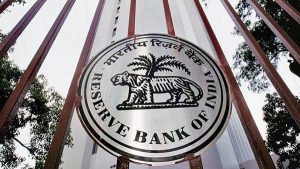
The Monetary Policy Committee of Reserve Bank of India, which met from 6-8 June 2022, took the following decisions.
- Taking into account the increase in housing prices since the limits were last revised and considering the customer needs, it has been decided to increase the existing limits on individual housing loans by cooperative banks.
- Accordingly, the limits for Tier I /Tier II UCBs shall stand revised from ₹30 lakh/ ₹70 lakh to ₹60 lakh/ ₹140 lakh, respectively.
- As regards RCBs, the limits shall increase from ₹20 lakh to ₹50 lakh for RCBs with assessed net worth less than ₹100 crore; and from ₹30 lakh to ₹75 lakh for other RCBs.
- Urban cooperative banks can now extend doorstep banking services to customers.
- This will enable these banks to better meet the needs of their customers, especially senior citizens and differently abled persons-
- Rural cooperative banks can now extend finance to commercial real estate (loans to residential housing projects) within existing aggregate housing finance limit of 5% of total assets
- To further augment customer convenience and facilitate recurring payments like subscriptions, insurance premia and education fees of larger value, limit per transaction for e-mandate based recurring payments increased from ₹5,000 to ₹ 15,000
Repo Rate:

The Reserve Bank of India (RBI) Governor announced that the Monetary Policy Committee voted unanimously to hike the benchmark interest rate by 50 bps with immediate effect.
- The Reserve Bank of India (RBI) increased the repo rate by 50 basis points to 4.90%.
- The earlier repo rate was 4.40% after the rates were increased by 40 basis points at an off-cycle meeting of the Monetary Policy Committee.
- The RBI also revised the inflation projection for FY23 to 6.7 percent from 5.7 percent earlier.
- The RBI also left its FY23 GDP growth forecast unchanged at 7.2%.
- The Standing Deposit Facility and Marginal Standing Facility rates also raised by 50 basis points. Standing Deposit Facility rate is now 4.65 per cent, while Marginal Standing Facility rate is at 5.15 percent.
- The Repo rate hike will force banks and non-banking finance companies to increase repo-linked lending rates and minimum cost of funds based lending rates (MCLR) further.
- This is because the cost of funds of banks will rise with the Repo rate hike.
- The net result will be a further rise in equated monthly instalments (EMIs) of existing borrowers.
- Moreover, new home, vehicle and personal loans will also become costlier.
- Consumption and demand can be impacted by the Repo rate hike.
- Banks will also have to increase the deposit rates in the coming months.
Survey To Count Elephants And Big Cats:
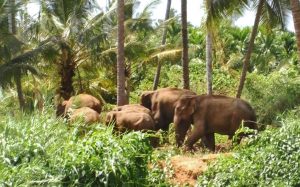
The government of India, for the first time this year, will present a unified count of the tiger, leopard and elephant populations of the country.
- Given that 90% of the area occupied by elephants and tigers is common, and once estimation methods are standardised, having a common survey can significantly save costs.
- Also, the ‘head count’ method, or one currently deployed to count elephants was “obsolete” and frequently led to animals being double counted.
- Currently, the tiger survey is usually held once in four years and elephants are counted once in five years.
- Since 2006, the Wildlife Institute of India (WII), Dehradun, which is affiliated to the Environment Ministry, has a standardised protocol in place that States then use to estimate tiger numbers.
- Based on sightings in camera traps and indirect estimation methods, tiger numbers are computed.
- Elephant numbers largely rely on States directly counting the number of elephants. In recent years, techniques such as analysing dung samples have also been deployed to estimate birth rates and population trends in elephants.
- According to the most recent 2018-19 survey, there were 2,967 tigers in India.
- According to the last count in 2017, there were 29,964 elephants in India.
Growing Demand For Lithium:

With the EV industry growing rapidly, the demand for lithium, an essential resource for EV battery makers, has surged along.
- It is estimated that if the entirety of ore from the African mines are extracted, it will be sufficient to meet the demand for at least 27.78 million vehicles with 60 kWh batteries.
- Lithium is a soft, silvery-white metal. Under standard conditions, it is the lightest metal and the lightest solid element.
- It is highly reactive and flammable, and must be stored in mineral oil. It is an alkali metal and a rare metal.
Key Characteristics and Properties:
- It has the highest specific heat capacity of any solid element.
- Lithium’s single balance electron allows it to be a good conductor of electricity.
- It is flammable and can even explode when exposed to air and water.
Uses:
- Lithium is a key element for new technologies and finds its use in ceramics, glass, telecommunication and aerospace industries.
- The well-known uses of Lithium are in Lithium ion batteries, lubricating grease, high energy additive to rocket propellants, optical modulators for mobile phones and as convertor to tritium used as a raw material for thermonuclear reactions i.e. fusion.
Unified Geologic Map Of The Moon:

The United States Geological Survey (USGS) in partnership with National Aeronautics and Space Administration (NASA) and the Lunar Planetary Institute has released a new comprehensive map of the Moon, called the ‘Unified Geologic Map of the Moon’.
- The new map showcases the Moon in a 1:50,00,000-scale size, and is claimed to come handy to researchers, scientists, students and the general public.
- The map has been created with the help of the information gathered from six Apollo-era regional maps.
- It also uses data from recently held satellite missions to the Moon.
- This new map will serve as the “definitive blueprint of the Moon’s surface geology for future human missions.”
- It will come handy to understand the surface of the Moon.
- The map will also help researchers learn the history behind the formations located on the Moon’s surface.
- Earlier, a leftover piece of a spacecraft flying through space reportedly hit the surface of the moon creating a new crater that may be around 65 feet wide (lunar crater).
PD1 Therapy For Cancer:

In a medical trial in the USA, 12 patients were completely cured of rectal cancer without requiring any surgery or chemotherapy.
- The trial used a monoclonal antibody dostarlimab every three weeks for six months for the treatment of a particular kind of stage two or three rectal cancer.
- The study was done by doctors from the Memorial Sloan Kettering Cancer Centre in New York.
- The trial showed that immunotherapy alone – without any chemotherapy, radiotherapy, or surgery that have been staples of cancer treatment – could completely cure the patients with a particular kind of rectal cancer called ‘mismatch repair deficient’ cancer.
- ‘Mismatch repair deficient’ cancer is most common among colorectal, gastrointestinal, and endometrial cancers.
- Patients suffering from this condition lack the genes to correct typos in the DNA that occur naturally while cells make copies.
- Immunotherapy is a treatment that uses a person’s own immune system to fight cancer. Immunotherapy can boost or change how the immune system works so it can find and attack cancer cells.
- Immunotherapy belongs to a category called PD1 blockades that are now recommended for the treatment of such cancers rather than chemotherapy or radiotherapy.
PD1 Therapy:
- PD1 is a type of protein that regulates certain functions of the immune system, including by suppressing T cell activity, and PD1 blockade therapy looks to release the T cells from this suppression.
- T-cells are the White Blood cells (WBCs). They are critical for developing immunity towards common pathogens or antigens.
- Earlier, this therapy was used post-surgery, but the study has shown that surgery may not be required.
- Although the therapy is usually used for cancers that have metastasised (spread to locations other than where the cancer formed), it is now recommended for all mismatch repair deficient cancers as they result in quicker improvement and lesser toxicity as compared to traditional chemo and radiotherapy.
- Eliminating other treatments can improve a patient’s quality of life by preserving fertility, sexual health, and bladder and bowel functions.
Australia India Water Security Initiative (AIWASI):
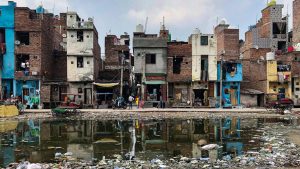
The Union Cabinet has approved a MoU (Memorandum of Understanding) between India and Australia on Technical Cooperation for Australia –India water Security initiative (AIWASI).
- AIWASI is a project Under South Asia Water Security Initiative (SAWASI) of Department of Foreign Affairs and Trade (DFAT), Australia.
- It aims to work towards the Water Sensitive City vision which is based on holistic management of the integrated water cycle.
- AIWASI will strengthen India’s water governance and undertake investments that provide.
- urban water services,
- support to disadvantaged communities to access reliable, safe water and sanitation services.
- The project will undertake and deliver a Water Sensitive Urban Design (WSUD) demonstration project.
- This AIWASI project is also a ‘living laboratory’ with multiple educational, social and environmental benefits like water literacy of students and the community, creation of green spaces, improved air quality from blue-green infrastructure and rejuvenation of degraded water bodies and aquifers.
Ban On Use Of Coal In Delhi-NCR:
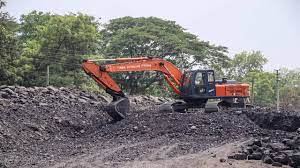
The Commission for Air Quality Management (CAQM) has issued directions to ban the use of coal in industrial, domestic and other miscellaneous applications in the entire Delhi-NCR region from 1st January 2023.
- This step is taken to bring down greenhouse gas emissions in Delhi NCR.
- Delhi is among the world’s most polluted capital cities.
- According to the pollution index, on average, the AQI in the capital, its neighboring cities – Gurgaon, Noida, and Ghaziabad – is in the 300-400 level mark.
- The Step to drive the switching over to cleaner fuel such as natural gas and biomass will not only help save 1.7 million tonnes of coal annually, but also reduce pollutants including Particulate Matter (PM), Nitrogen Oxide (NOx), CO2 and Carbon monoxide (CO).
- However, thermal power plants in NCR are allowed to use low-sulphur coal.
- Heavy pollution from coal is a significant contributor to the degrading quality of air in the NCR and surrounding areas, and thus a need to switch to a cleaner fuel has been felt over time.
- Every year, air pollution from fossil fuels takes millions of lives, increases our risk of stroke, lung cancer and asthma, and costs us a huge amount of money.
- The decision to ban use of coal as a fuel will boost the prospects of natural gas in the NCR.
- As per the Petroleum Planning & Analysis Cell, the global per capita natural gas consumption is 496 cubic meters) compared to 43 cu m for India.




